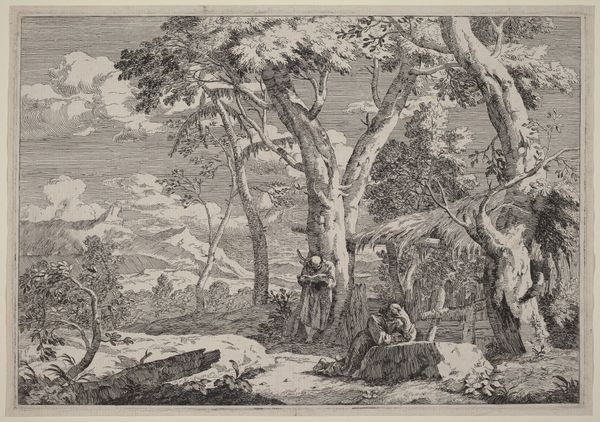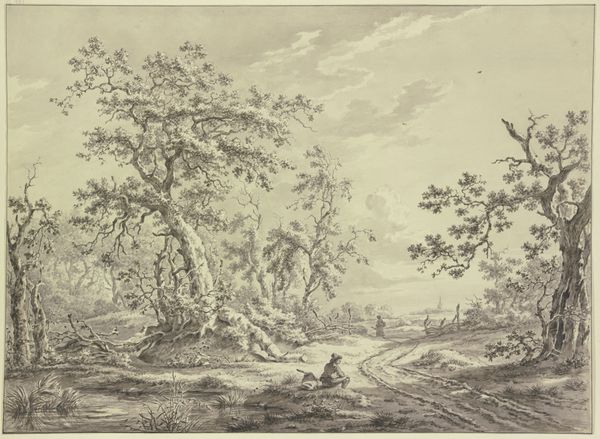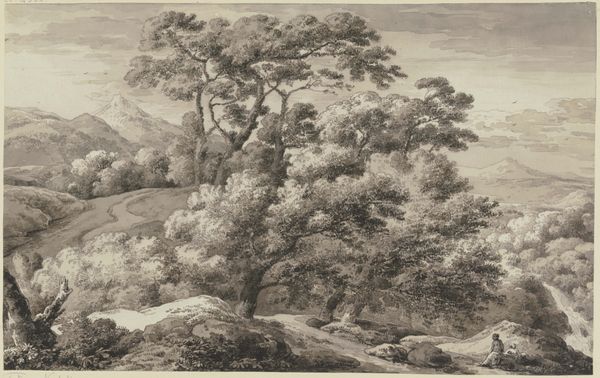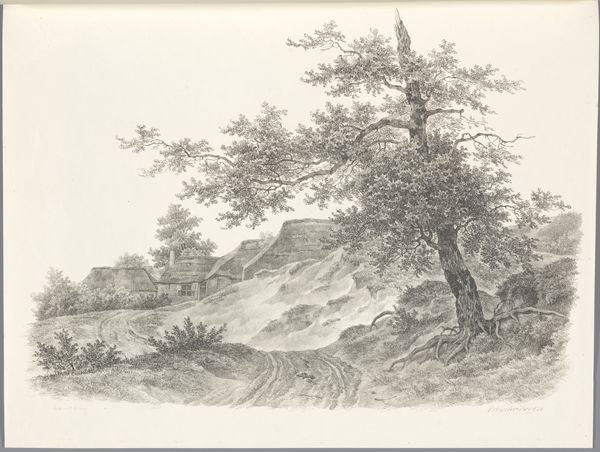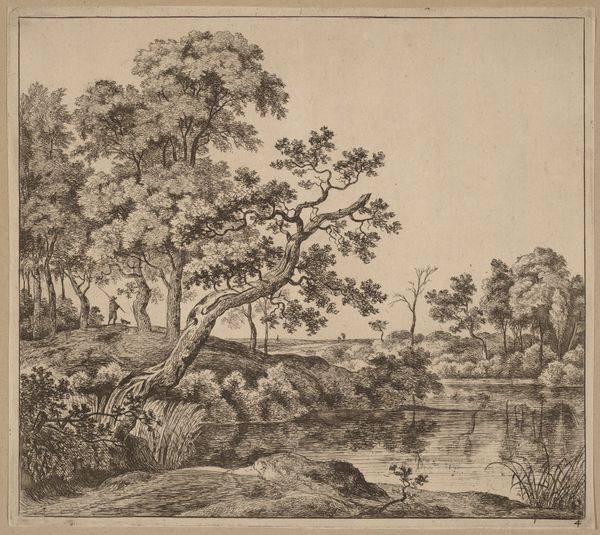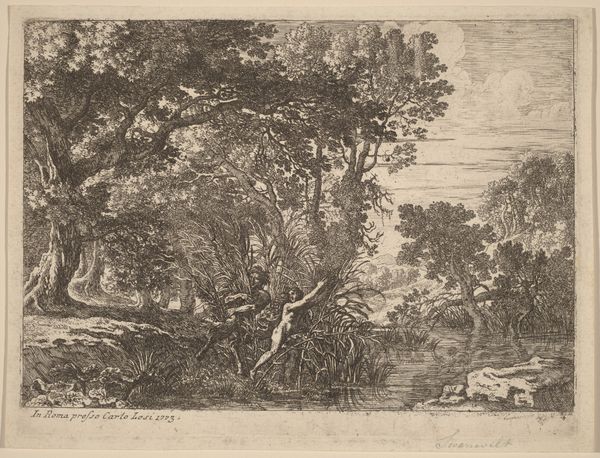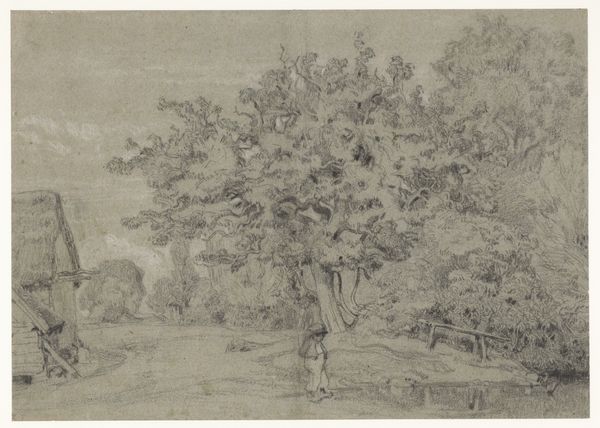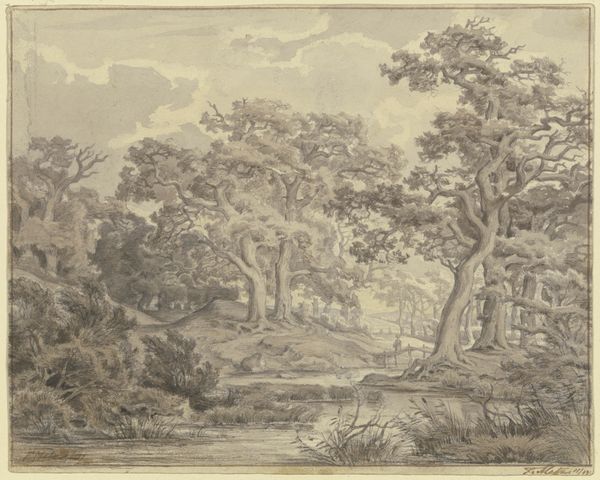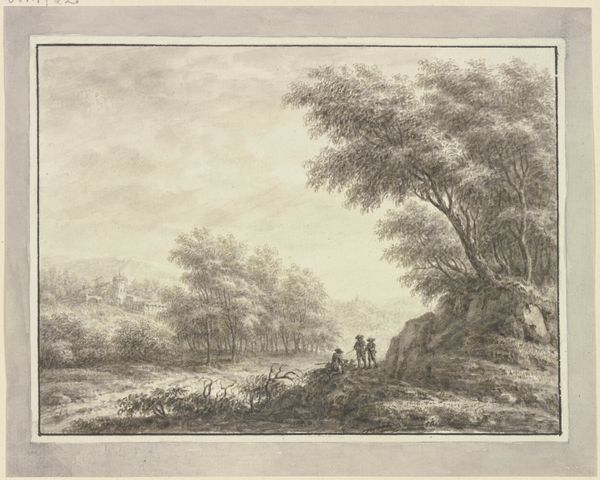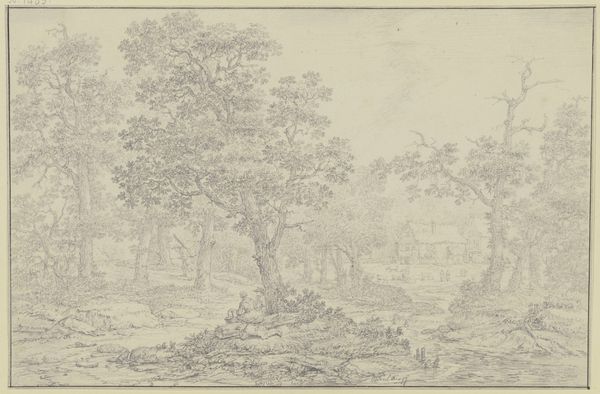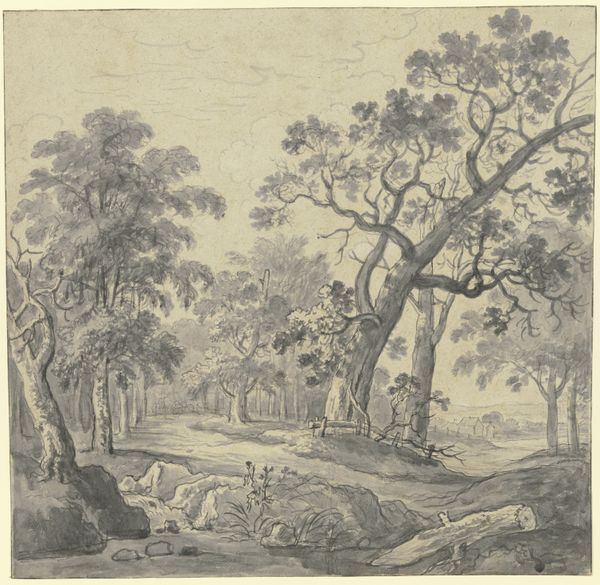
drawing, paper, ink, chalk, graphite
#
drawing
#
landscape
#
paper
#
ink
#
romanticism
#
chalk
#
15_18th-century
#
graphite
Copyright: Public Domain
Curator: Welcome. Before us is a drawing entitled “Eichenwald, am Weg eine rastende Familie,” which translates to “Oak Forest, with a Resting Family by the Road,” created by Heinrich Wüest. It’s rendered in ink, chalk, and graphite on paper. Editor: My first thought? A profound stillness. The muted tones and the detail in those gnarled branches create a scene both inviting and slightly melancholic. Curator: Wüest's work often depicts the allure of the natural world, filtering it through a romantic lens. This piece beautifully exemplifies his stylistic interest in landscape. Notice the almost palpable sense of depth. Editor: I appreciate how Wüest subtly embeds a social element, that family, into what would otherwise be a pure landscape. The figures offer a perspective, inviting us to consider the relationships between humanity and nature during the time the artist made the image. The forest becomes not just a backdrop, but also a place of pause, rest, and perhaps contemplation. Curator: Indeed. There's an inherent tension—a kind of quiet drama, if you will—between the wildness of the forest and the quiet moment captured. One gets a sense of scale, a gentle reminder of our small place in this vast, untamed earth. The lighting, even in this monochromatic palette, casts a dreamlike veil. Editor: Absolutely. That interplay between the grandiose landscape and those almost spectral figures is significant. Romanticism frequently idealized nature as a space for personal introspection, which certainly shows here. But, at the same time, those works are equally telling of their period’s socioeconomic context; nature functioned differently for different people. Was the “rest” accessible to all? Or only a leisure granted to some? Curator: That's a rich and complex layer. It’s important to question assumptions about leisure and privilege that artwork sometimes silently propagates. Perhaps in these subtle strokes, we can see more than just romantic ideals of nature, and begin to trace its use as refuge. Editor: Reflecting on our conversation, what strikes me is how a relatively simple drawing can offer such depth. Curator: I'm left appreciating Wüest's gentle invitation. It nudges us to consider not only our relationship with nature but with each other.
Comments
No comments
Be the first to comment and join the conversation on the ultimate creative platform.
